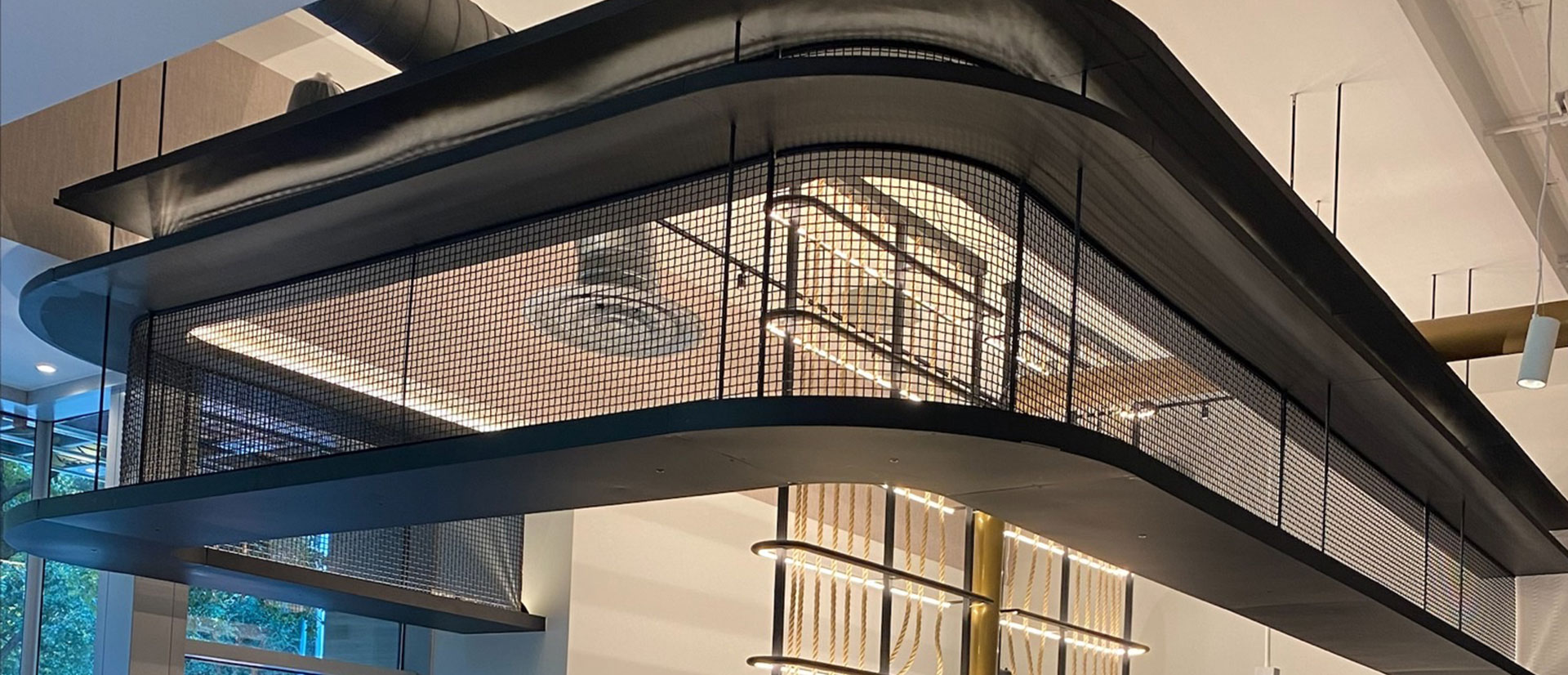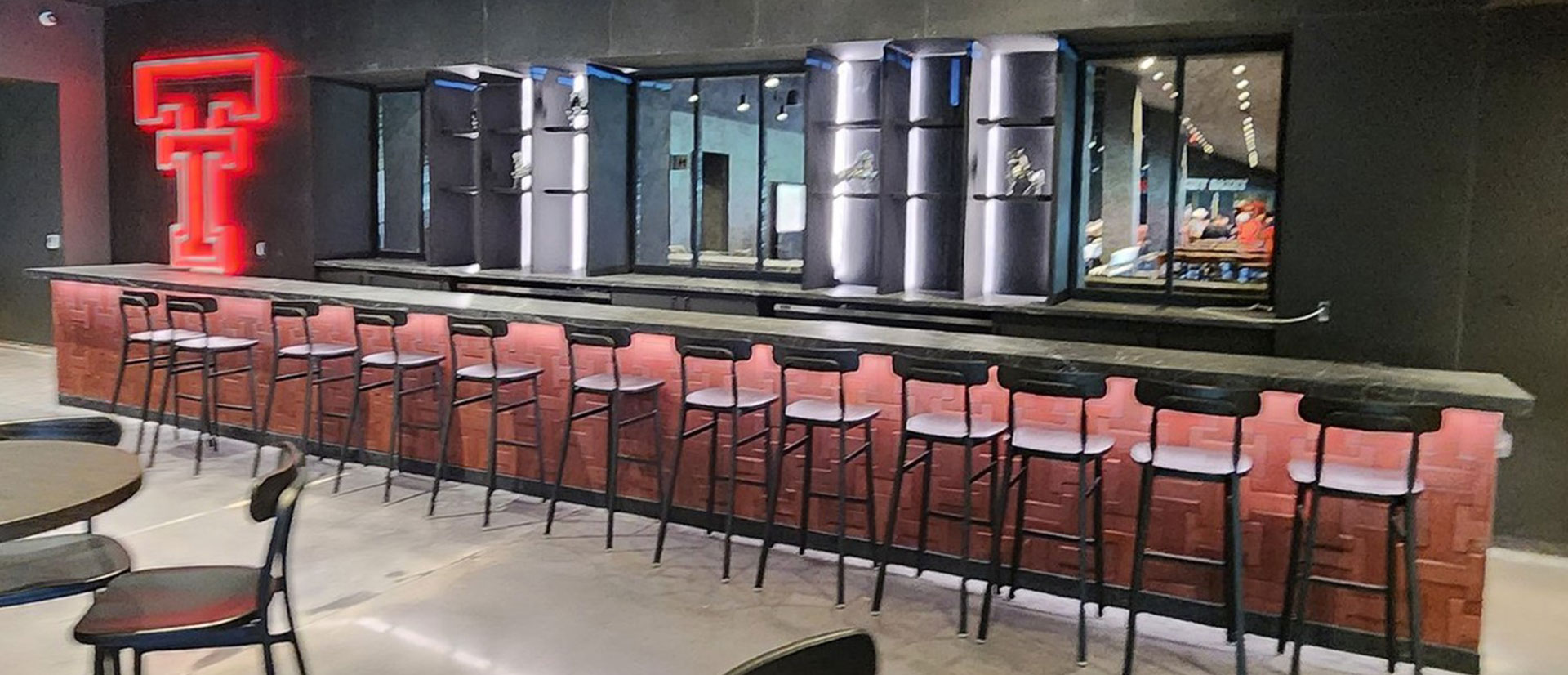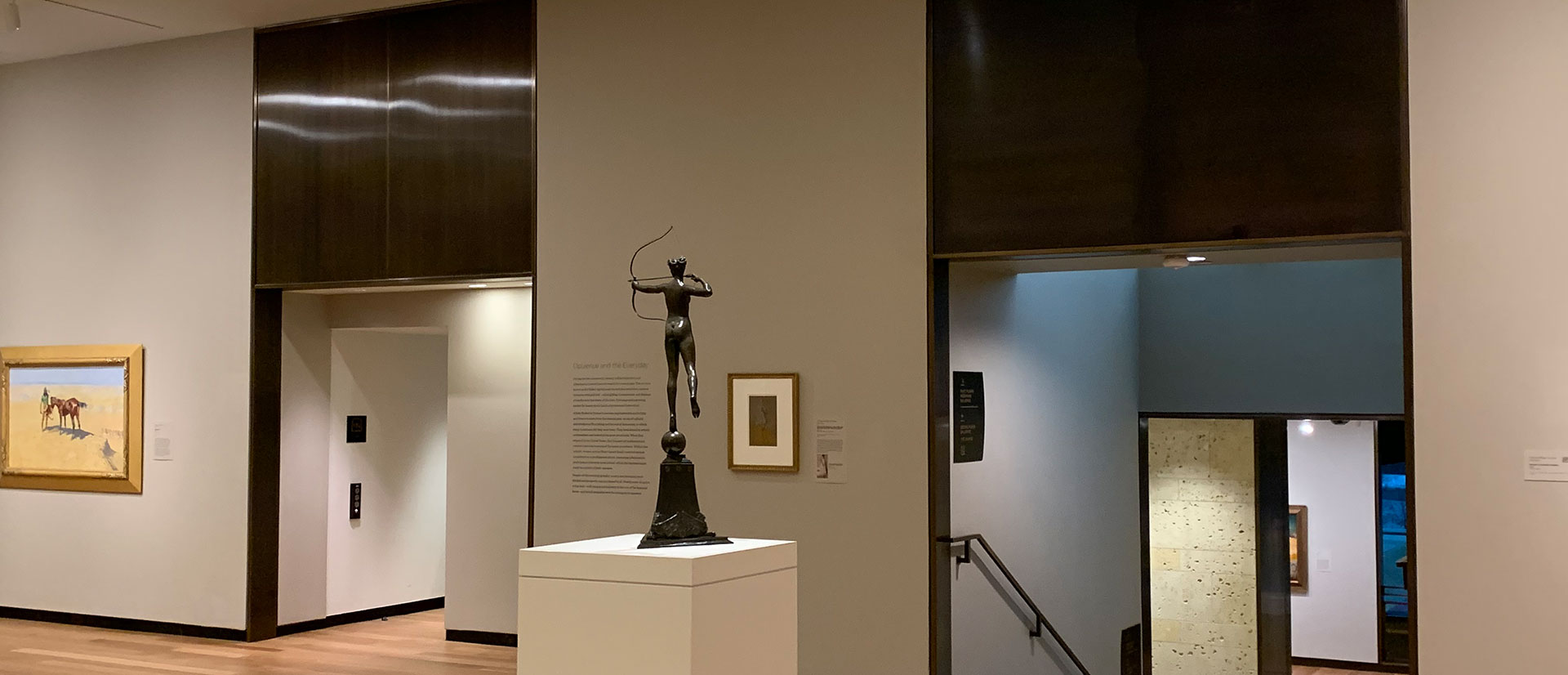
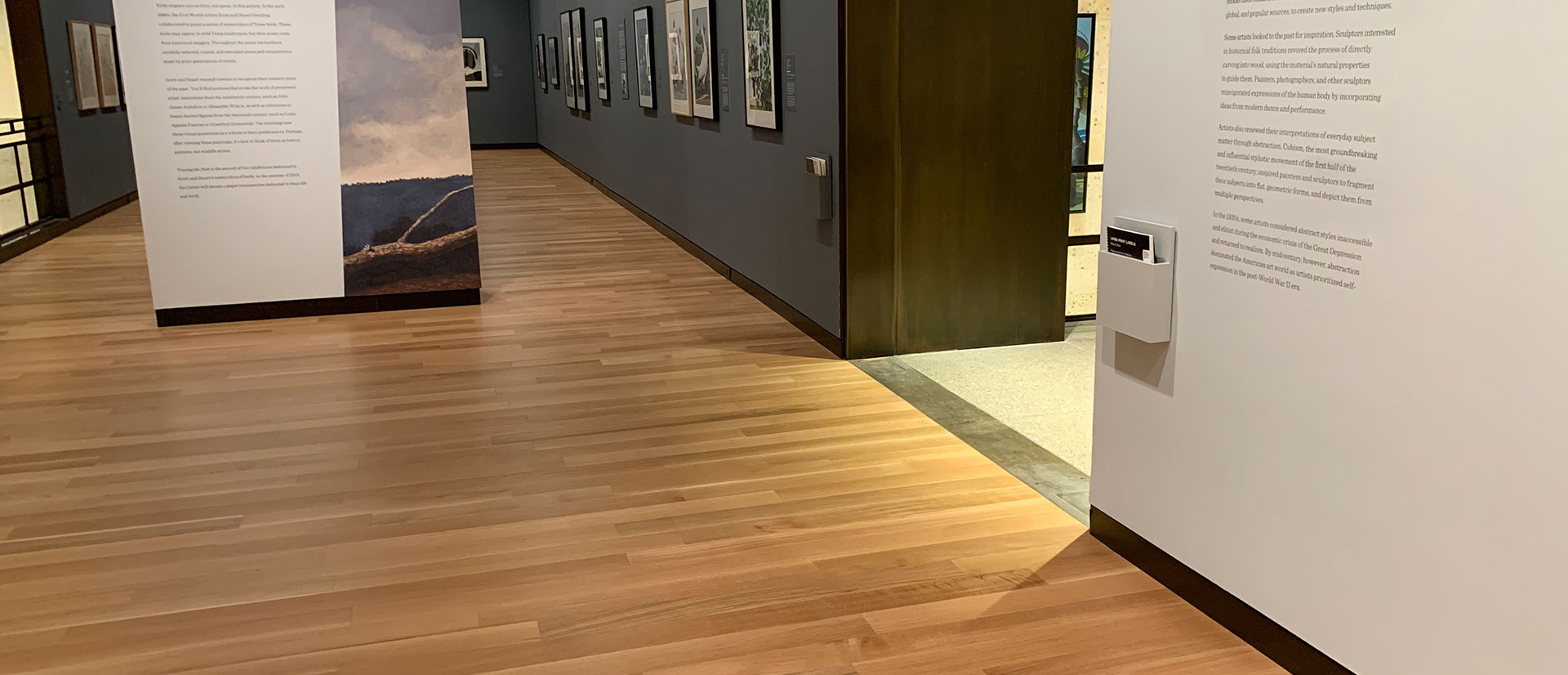
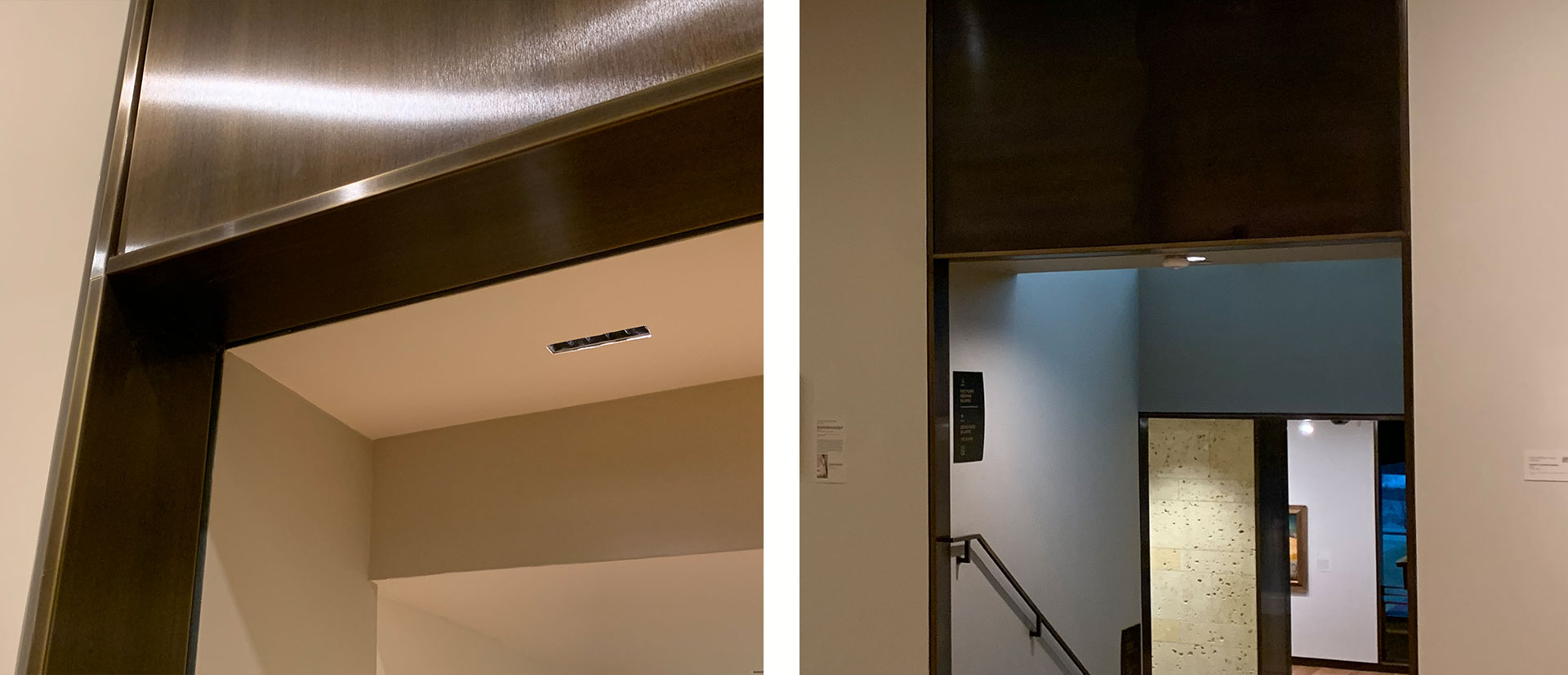
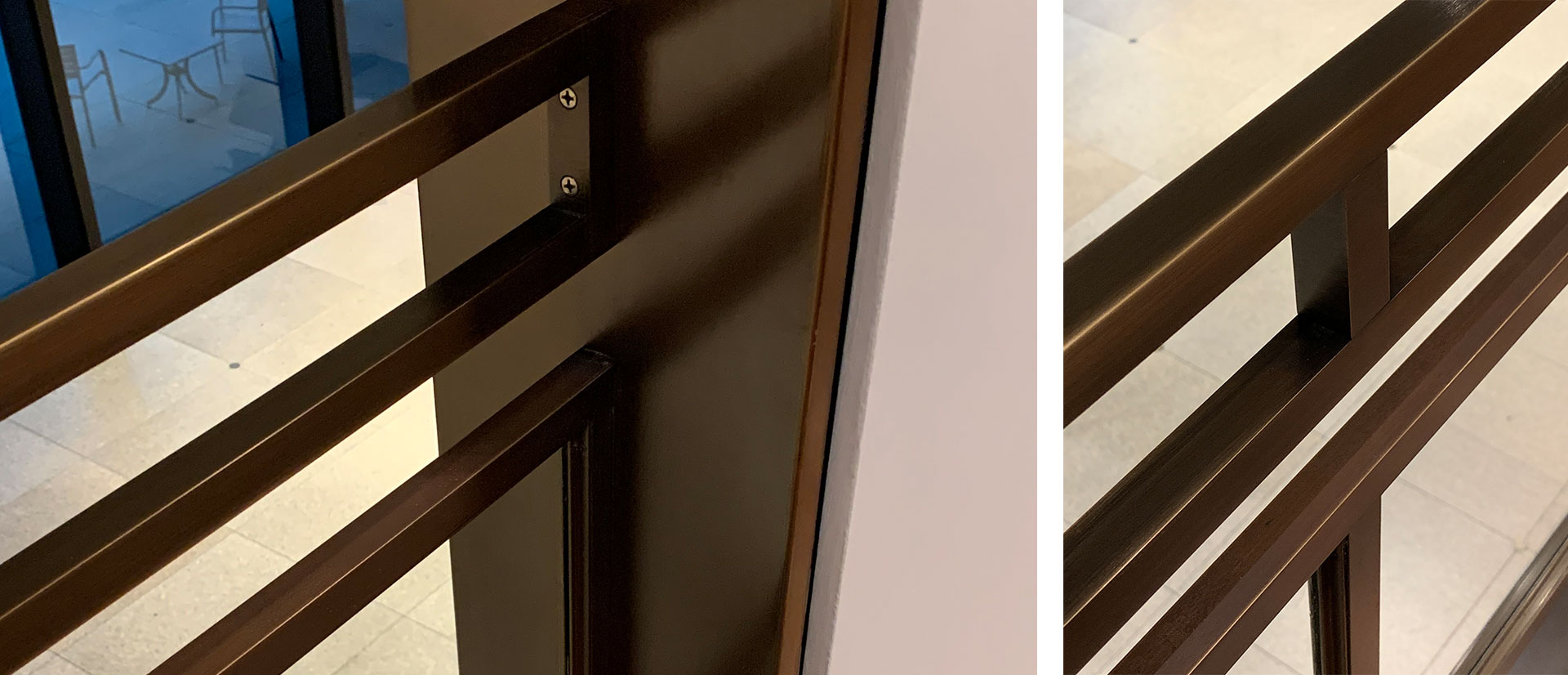
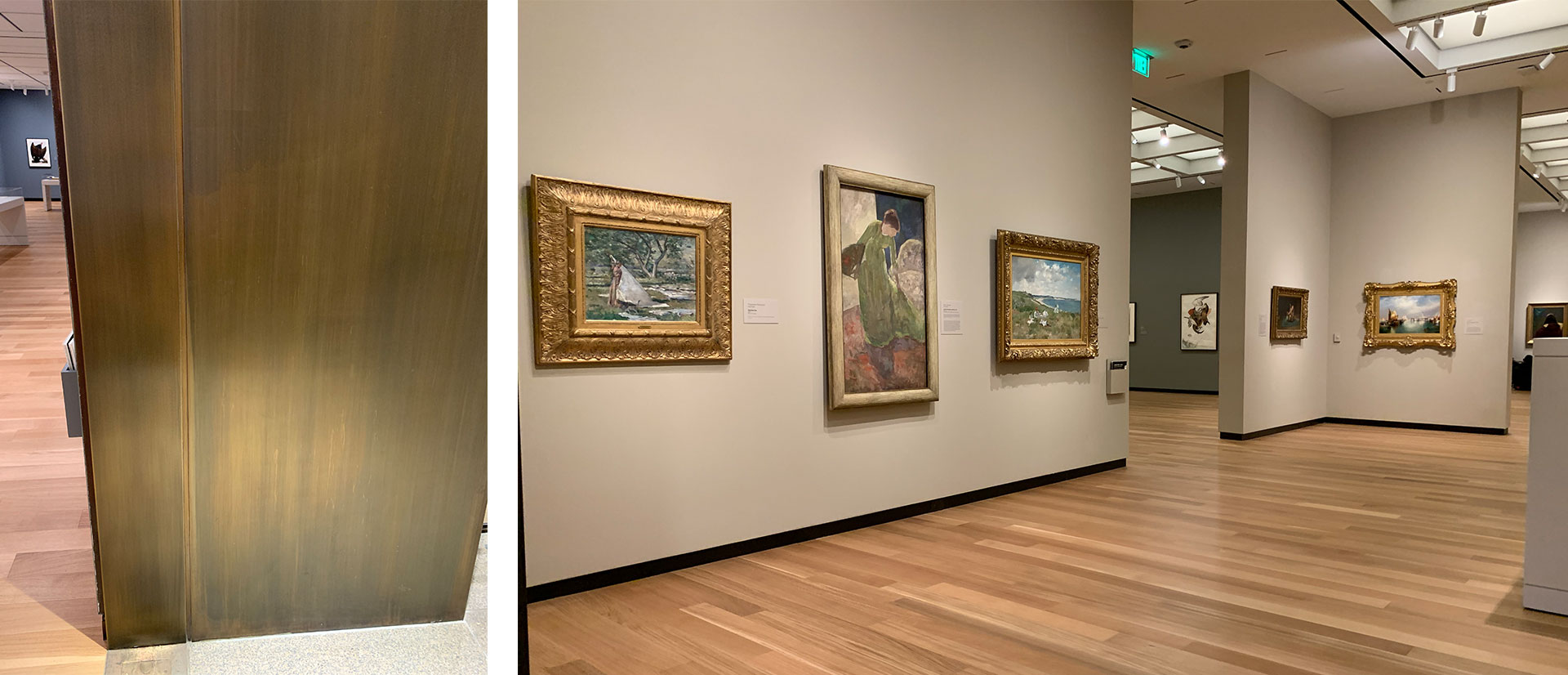
Historic Railing and Metal Work Restoration at the Amon Carter Museum of American Art
Client: Amon Carter Museum of American Art
Location: Fort Worth, Texas
Scope: Custom fabrication and restoration of metalwork to match historic finishes and meet modern compliance standards
Project Overview:
The Amon Carter Museum of American Art in Fort Worth, Texas, is a cultural landmark that opened its doors in 1961. As part of ongoing efforts to modernize the museum while preserving its historic character, the museum identified a need to increase the height of some guardrails overlooking a large open area. The challenge was ensuring these new guardrails met current safety standards while seamlessly blending in with the museum’s original 1961 metalwork, featuring a distinctive antique bronze finish.
Astro Sheet Metal was contracted to design, fabricate, and install the required rail additions and replicate the museum’s original metalwork finishes. In addition to the guardrails, Astro was tasked with manufacturing and finishing large transom panels for a newly added stairwell and elevator, both necessary for ADA compliance. Astro also provided new 4” base metal for all exhibit rooms to complete the restoration.
Design and Collaboration:
1. Assessing the Existing Metalwork:
Before any design work began, Astro’s team visited the Amon Carter Museum to evaluate the existing guardrails and surrounding architecture. The original guardrails, installed when the museum opened, were integral to its architectural style, so the new additions needed to blend in perfectly with the vintage metalwork.
- Historical Accuracy: The museum needed to maintain the space’s historical integrity while ensuring that the new guardrails complied with modern safety regulations, particularly the increased height required for fall protection. This involved careful measurements and a thorough review of the museum’s design guidelines to ensure that the new railings matched the aesthetic and structural qualities of the originals.
2. Custom Design Process:
Astro’s team worked closely with the museum’s project managers to design the rail additions. To match the antique bronze finish of the original 1961 rails, Astro’s designers ensured that the new components were virtually indistinguishable from the existing elements in terms of style, profile, and finish.
- CAD Design: Using CAD software, Astro’s team created detailed digital drawings of the new railing additions, carefully planning to integrate them with the existing railing system. Special attention was given to the height and spacing of the new guardrails to ensure they met aesthetic and safety standards.
- Transom Panels and Base Metal: In addition to the guardrails, the design also included transom panels to be installed above the stairwell and a new elevator, both part of the museum’s efforts to enhance ADA accessibility. New 4” base metal was also fabricated to add continuity to the museum’s exhibit rooms, further enhancing the overall aesthetic.
Fabrication and Custom Finishing:
1. Precision Fabrication of New Railings and Panels:
Once the design was approved, Astro’s fabrication team set to work on the custom railings and transom panels. The fabrication process required a blend of modern techniques and historical accuracy.
- High-Quality Materials: The railings, transom panels, and base metal were all made from durable, high-quality materials—chosen to not only match the original metalwork in terms of appearance but also to ensure that the new components would stand the test of time in a museum environment.
- Bending and Welding: The railings were carefully saw-cut to the required lengths using precision equipment to match the style and profile of the original components. Each piece was welded and assembled with attention to detail, ensuring the final product was sturdy and visually aligned with the 1961 design.
2. Custom Finishing to Match Antique Bronze:
One key project challenge was matching the original antique bronze finish on the existing metalwork. To replicate this historical finish, Astro worked with a custom metal finisher who visited the site to match the tone and texture of the 1961 metalwork.
- Antique Bronze Replication: The custom finisher used a combination of patina treatments and finishing techniques to replicate the unique aged, warm bronze appearance of the original railings and metal elements. The process involved several steps, including applying a chemical patina to the metal and manually polishing and buffing it to achieve the desired look.
- Seamless Integration: The goal was to make the new components visually indistinguishable from the original parts, so much so that even museum staff and visitors could not tell which elements were newly added. The custom finish ensured that the new railings, transom panels, and base metal blended effortlessly with the museum’s historic design.
Installation and ADA Compliance:
1. On-Site Installation:
After the fabrication and finishing were completed, Astro’s team installed the new railings and transom panels at the Amon Carter Museum. The installation process was carefully coordinated to ensure each element was securely placed while respecting the existing museum architecture.
- Guardrail Installation: The new guardrails were installed at the correct height and anchored securely to meet ADA guidelines for safety and accessibility. The installation was designed to minimize disruption to the museum’s ongoing operations and preserve the space’s integrity.
- Transom Panels and Base Metal: The transom panels were installed above the stairwell and elevator, enhancing the overall visual appeal of the museum’s new features while also improving ADA accessibility. The new base metal was installed in the exhibit rooms, providing a seamless and finished look to the museum’s interior spaces.
2. Final Inspection and Adjustments:
Once all elements were installed, a final inspection was conducted to ensure the new additions met all safety standards and the museum’s aesthetic expectations. Any minor adjustments necessary to the alignment or finish were promptly addressed.
Challenges and Solutions:
- Matching Historic Finishes: Replicating the original railings’ exact antique bronze finish was one of this project’s most challenging aspects. The unique finish had aged naturally over 60 years, and getting the new pieces to match ideally required extensive collaboration with a specialized metal finisher. The process involved precise patina application and hand-finishing techniques to ensure the metalwork looked authentic and cohesive with the original.
- Balancing Historic Design with Modern Compliance: The project required balancing modern safety standards with the desire to preserve the museum’s historical look. Astro’s design team worked closely with the museum to ensure that the new guardrails met ADA requirements without disrupting the visual flow of the historic space.
- Museum-Specific Installation Considerations: Working in a museum environment, Astro’s team had to ensure that the installation did not disrupt the museum’s daily operations or affect its public-facing areas. Care was taken to ensure that the work was done efficiently and with minimal disruption.
Final Outcome:
The result was a seamless integration of modern functionality with historic design. The new guardrails, transom panels, and base metal were installed to comply with the ADA while preserving the Amon Carter Museum’s aesthetic integrity. The antique bronze finish was flawlessly replicated, ensuring the new additions blended seamlessly with the original 1961 metalwork. Visitors to the museum can now enjoy the safety and accessibility of the newly installed railings and features without detracting from its historic charm.
This project showcases Astro Sheet Metal’s expertise in historic preservation, custom metal fabrication, and fine finishing. It highlights our ability to deliver high-quality, architecturally sensitive solutions that respect modern safety needs and historical significance.
Conclusion:
Astro’s work at the Amon Carter Museum exemplifies the company’s ability to deliver custom metalwork solutions for projects that require technical expertise and a sensitive approach to historic preservation. Through collaboration with the museum’s team, meticulous design work, and specialized finishing, Astro enhanced its safety and accessibility without compromising its landmark aesthetic, ensuring it remains an iconic space for future generations.
Keywords:
Astro Sheet Metal
Sheet metal Dallas
Architectural metal
Custom architectural metal
Custom metal fabrication
Custom sheet metal
Sheet metal Texas
Sheet metal Fort Worth
Sheet metal Grand Prairie
Custom brake metal
Custom decorative metal
Custom ornamental metal
Architectural metal
Decorative metal
Ornamental metal
Shearing
Forming
Laser cutting
Welding
Refinishing
Autodesk Inventor
CAD Design
Submittal drawings
Mockup samples



